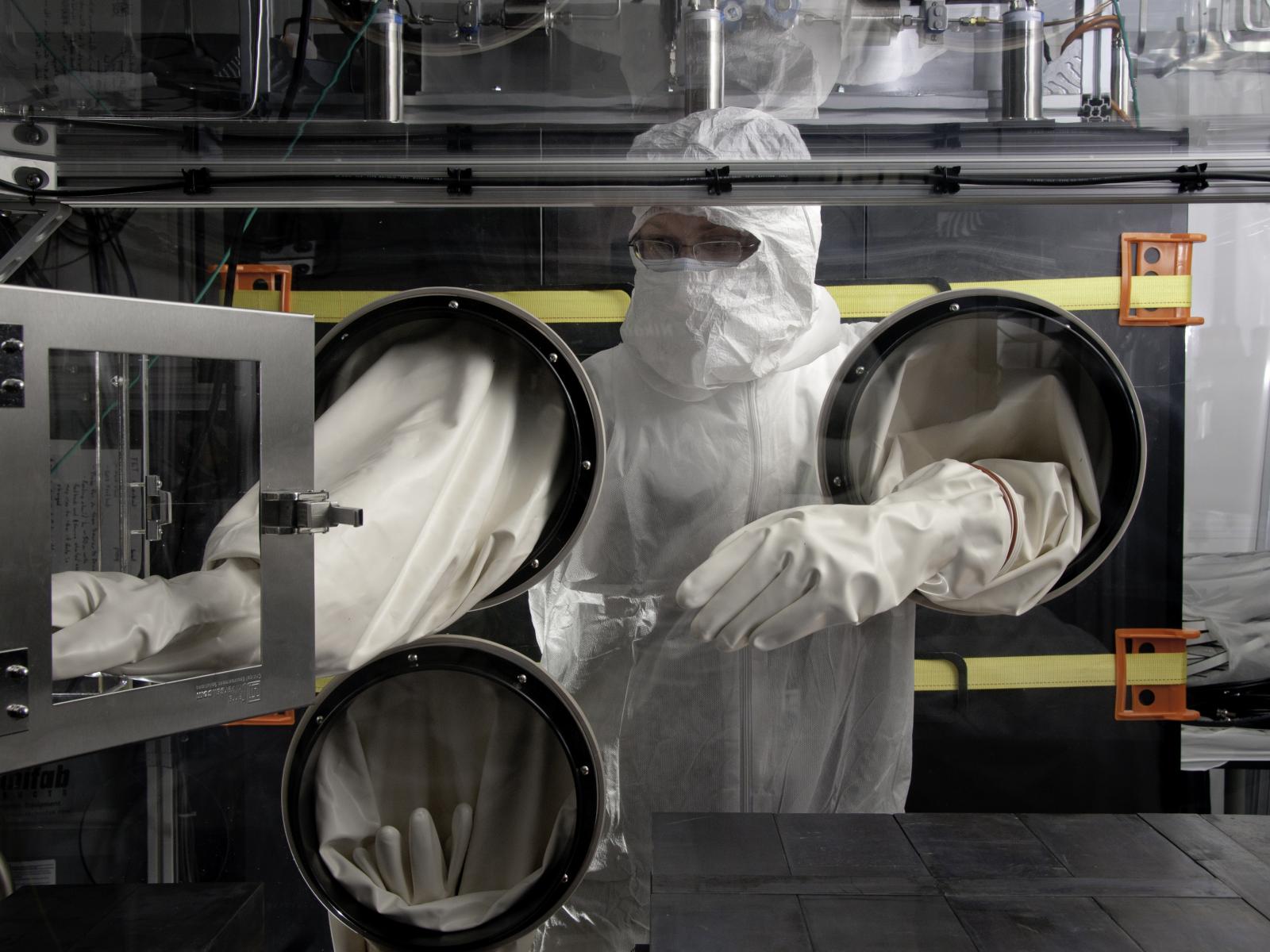Shallow Underground Laboratory
Going deep underground for measurement science and detector development

Forty feet underground, shielded by another 20 feet of concrete, Earth and rocks, researchers work in clean rooms using an electroforming process to produce high-purity copper. Electroforming removes even trace amounts of naturally occurring radioactivity, leaving one of the most pure materials ever made. This and other similar materials, are key ingredients in sensitive detectors used to advance national security missions, fundamental physics research, and support important environmental mission priorities like water security.
This high-purity copper is produced in PNNL’s Shallow Underground Laboratory, a cleanroom facility unique in the Department of Energy complex that is dedicated to both ultra-sensitive nuclear measurements and low-background detector system development and production. The depth of the facility shields against radioactive backgrounds induced by cosmic rays—the most difficult source to shield against on the Earth's surface. A cleanroom air filtration system and positive pressure relative to the outside protects the facility from the radioactivity found in dust.
Through advances in materials storage, purity, and fabrication, PNNL scientists build highly sensitive radiation detectors to meet nuclear security and basic research challenges. The nearly 6,600-square-foot facility houses some of the world’s most sensitive instruments to test materials for trace levels of radioactivity and supports international treaty verification to prevent and counter acts of terrorism. The laboratory also plays a significant role in the search for dark matter in the universe.